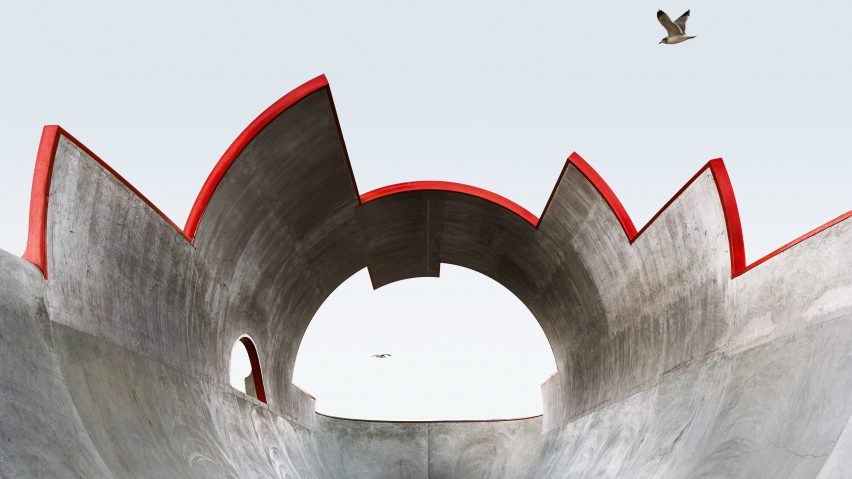
California's "elaborately designed" concrete skateparks captured by Amir Zaki
Jagged tunnels edged with red trim, scooped walls and wave-like canopies are among the defining features of these vacant concrete skateparks in California, photographed by artist Amir Zaki.
The images feature in the California Concrete, a Landscape of Skateparks publication, and document 12 unusual and elaborate skateparks in city's across the state.
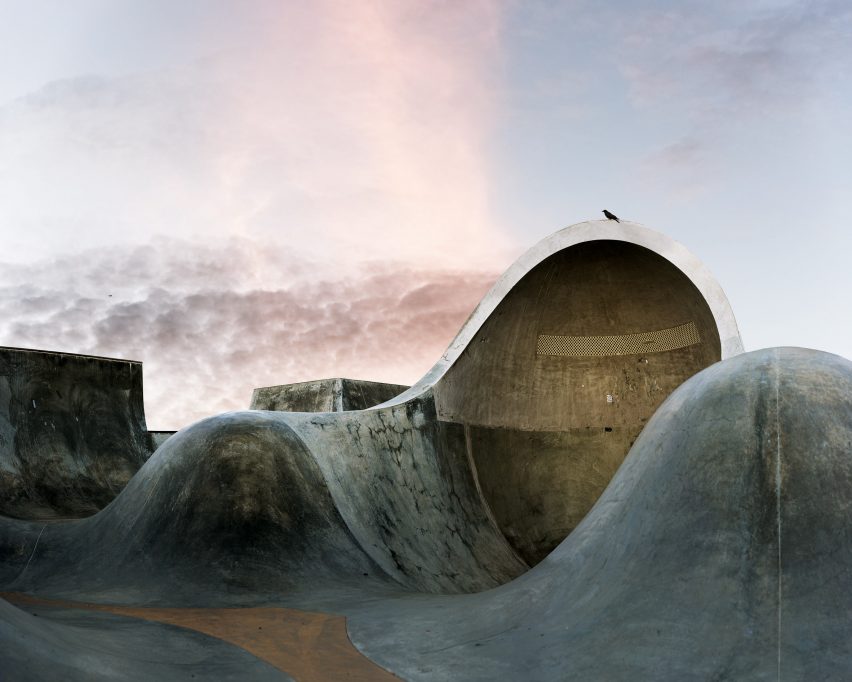
Zaki, who grew up skateboarding in a Southern California suburb, undertook the project to capture the structures designed for heightening the experience of the sport.
Devoid of skateboarders, his photos instead focus on the forms including scooped walls, curled roofs, undulating floors and mounds, and tunnels with a red trim.
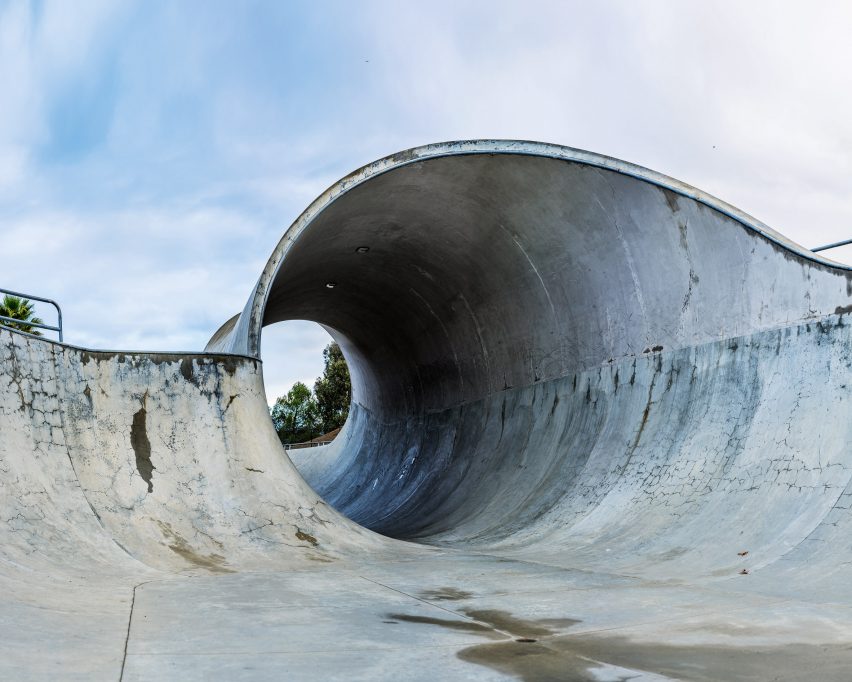
"They are essentially large and elaborately designed empty vessels, as much as they are concrete models of naturally found elements of the landscape such as mountains, hills, waves, and rocks," Zaki told Dezeen.
"Although these refined spaces are born out of conceptions of the various curvilinear shapes found in nature, they are frozen and 'permanently' cemented, recalling some of the most extreme examples of Brutalist architecture."
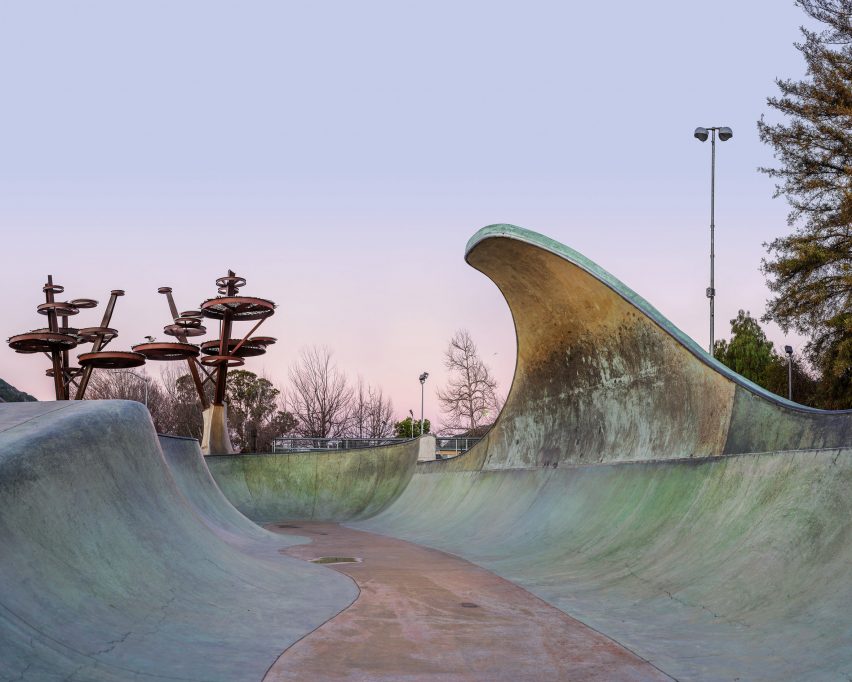
Among the set are the Chino Skatepark, Rancho Santo Margarita Skatepark and Eastvale Harada Skatepark in Corona. Each are carved deep into the ground making them "cavities more than monuments," according to the artist. "They are, in this sense, anti-architecture," he added.
San Jose's Lake Cunningham Regional Skatepark, however, features a tall wall that rises high above ground level, while a bowl shape protrudes high above the Etnies Skatepark in Lake Forest.
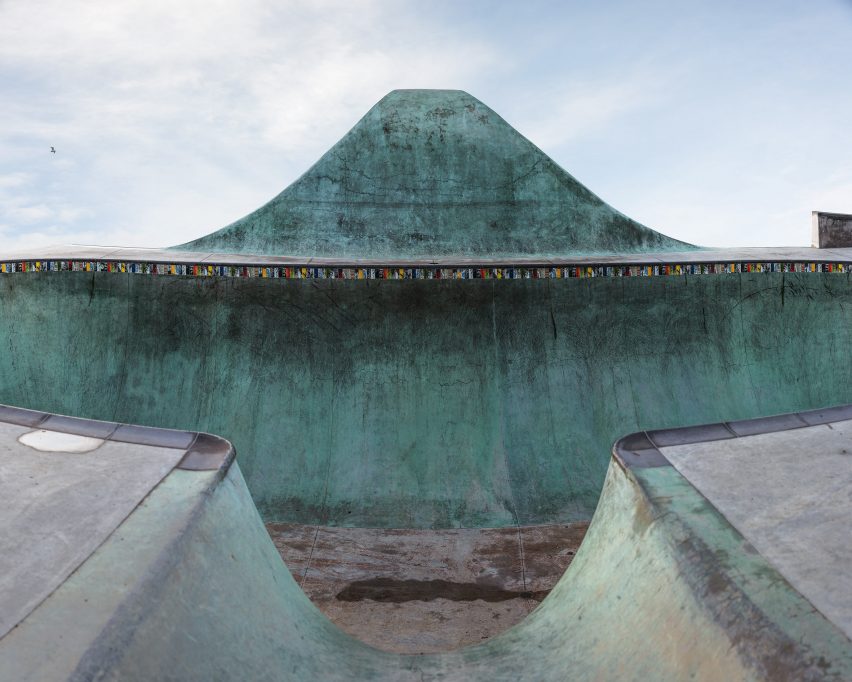
The artist used "questionable and creative" measures to enter the parks during the early hours of the morning to get the shots without intruding on skateboarders.
He then took the images from the base, to emphasise the shapes. "It was crucial that I climbed deep inside these concrete, cavernous spaces, which is a fundamentally different visual experience, not to mention bodily experience, than viewing from a distance on the outside," he said.
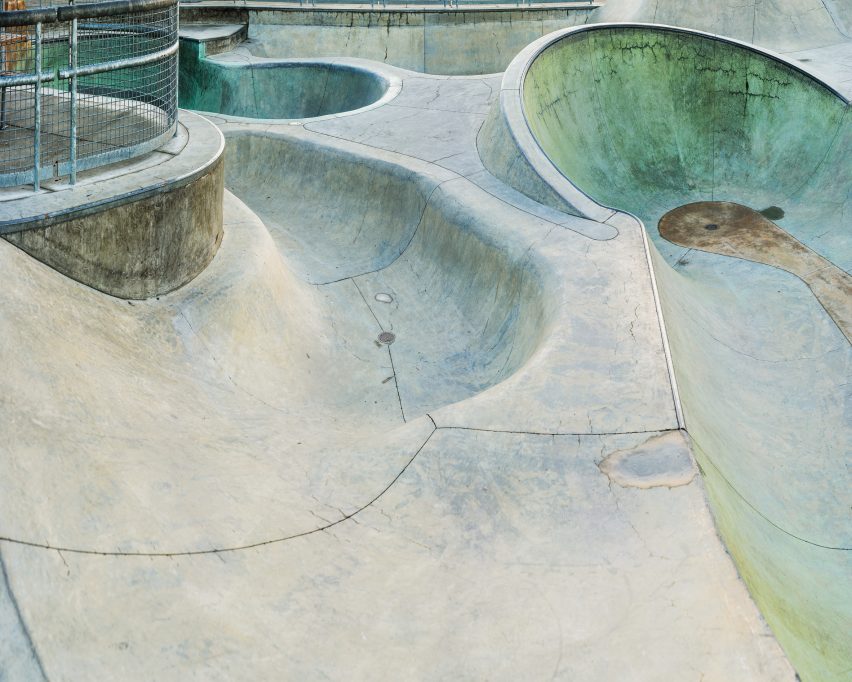
Zaki used a digital DLR camera mounted onto a Gigapan motorised tripod head. Each park was shot multiple times and then the images were stitched together to form a single photo.
"The lens I use is somewhat telephoto, which flattens the space in each individual frame, yet the overall angle of view is often quite wide, which exaggerates spatial depth," he said.
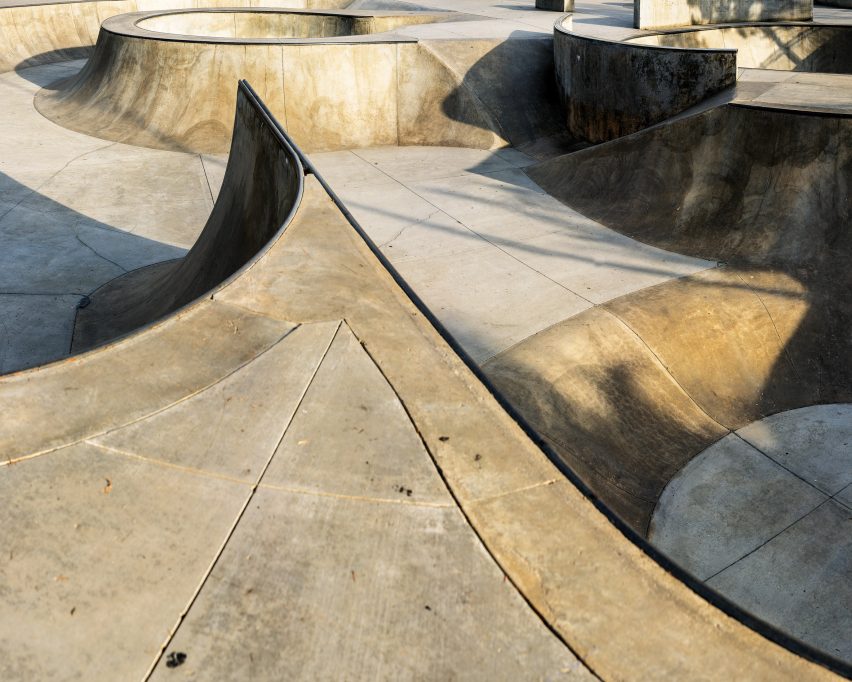
"So, there is a visual push and pull, a subtle contradiction, and peculiarity in how space is rendered using this technology," he added. "This process also allows me to photograph in certain tight areas and from difficult positions that would be impossible to capture otherwise."
Most of the parks are in Southern California, which is celebrated as the birthplace of the sport. It is also the home of the first purpose-built venue, Carlsbad Skatepark, which was completed in San Diego in 1976.
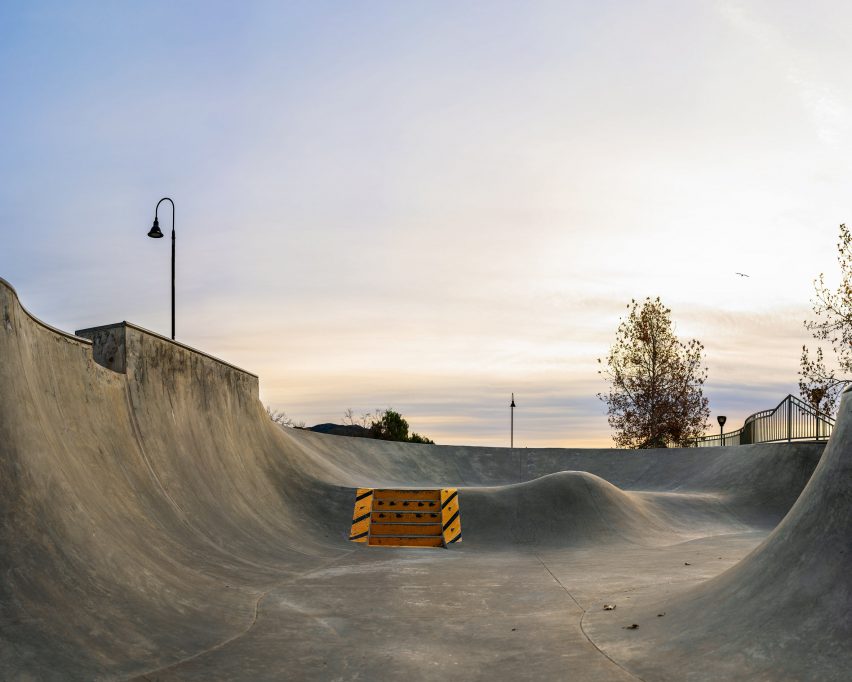
Published by Merrell, the California Concrete book includes an essay written by Los Angeles architect Peter Zellner that traces the evolution of these "athletic landscapes".
Zellner dates it back to the late 1960s, when a drought in Southern California left surfers with no surf and a series of empty swimming pools.
The rounded empty pools, which included The Escondido Reservoir, formed an ideal playground for the bored surfers to simulate surfing with skateboards. The popularity of the sport led to the creation of parks across the state.
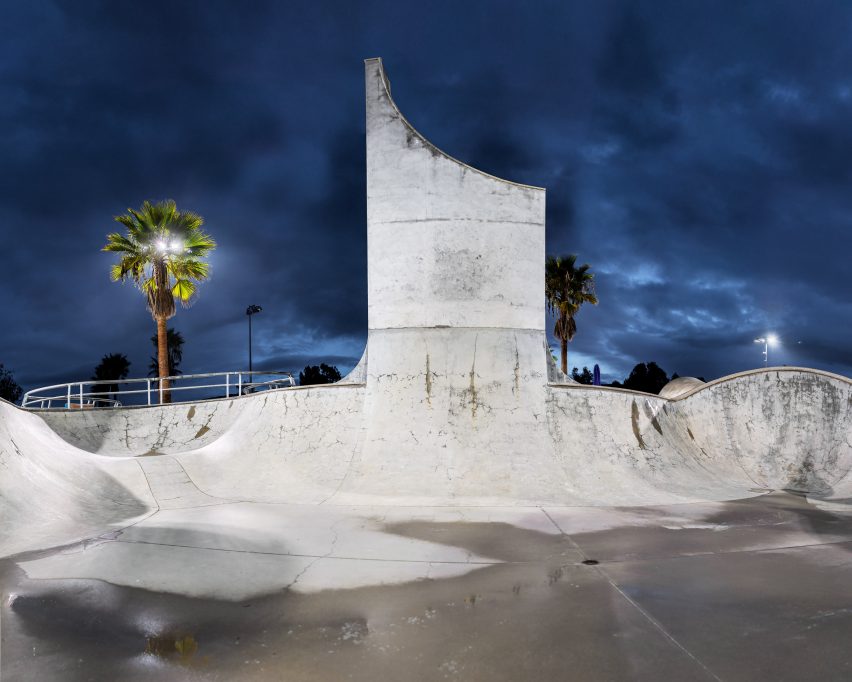
"Southern California is the quintessential birthplace of skateboard culture and where these parks continue to flourish as architects, engineers, designers, and skateboarders collaborate to refine their designs, evolving fluidly together as the sport also evolves," said Zaki.
Skateboarding has grown massively since its early beginnings in the 1960s into a mainstream sport, and will appear at the Olympics Games for the first time in 2020. Iain Borden also explored the growth of the movement in his book Skateboarding and the City, which highlights skateparks built in cities across the world.